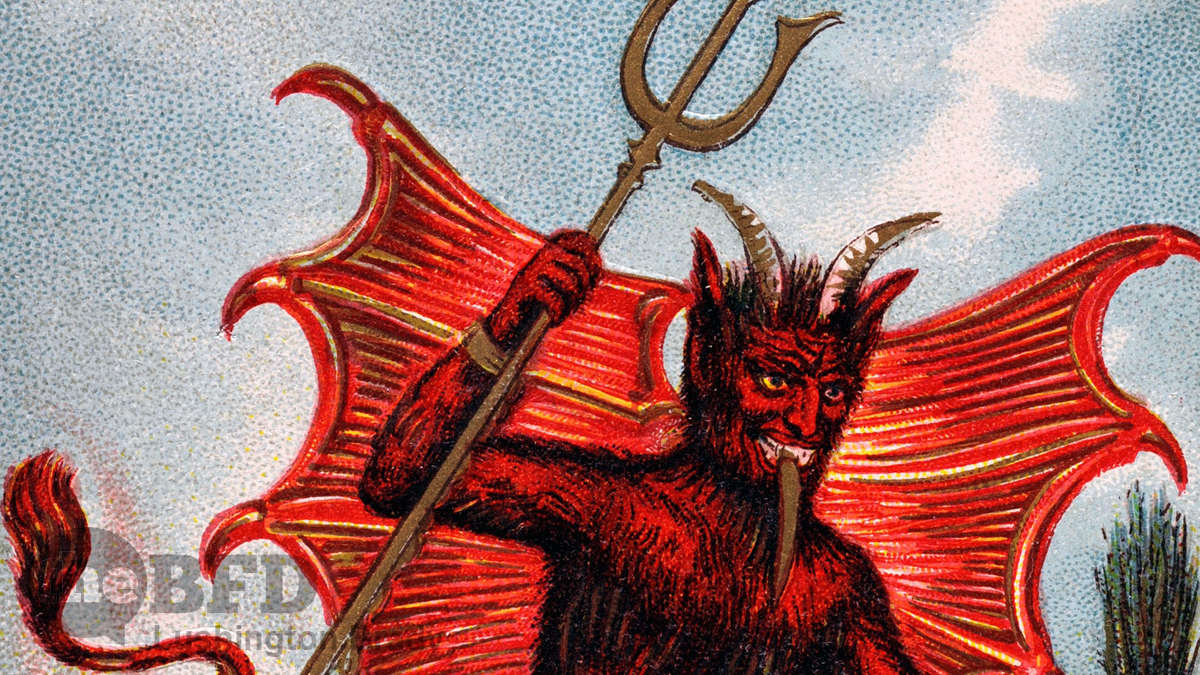Horns. Cloven hooves. Pointy tail. Chiselled abs, goatee, red tights and pitchfork. You all know who it is. A figure as recognisable in popular Western culture as Santa Claus, Jesus or Elvis.
The Devil.
Previously, I’ve looked at the evolution of historical depictions of Jesus and Mary. But what about their nemesis? Like the previous two, the iconography of the Devil has evolved over thousands of years of Judeo-Christian culture. Here are eight of the common stereotypes.
The Serpent
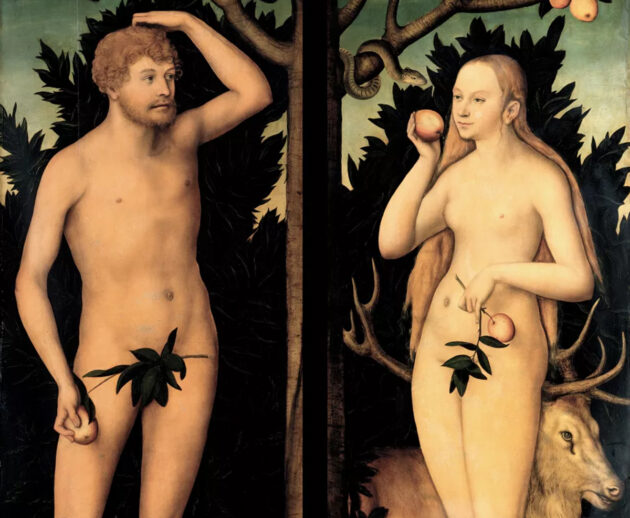
“Satan” is derived from the Hebrew word meaning “adversary”. Perhaps the greatest adversary of humanity in the Genesis account of our origins is the serpent which tempts Adam and Eve in the Garden of Eden.
The serpent of Genesis is not explicitly named as Satan. But Genesis does describe the eternal enmity between the serpent and humanity: “I will put enmity between you and the woman, and between your offspring and hers,” God tells the snake. “He will crush your head, and you will strike his heel.”
It is not until the New Testament, though, that Satan is explicitly referred to as a serpent. Even today, though, we inextricably associate the serpent with the Devil.
The Fallen Angel
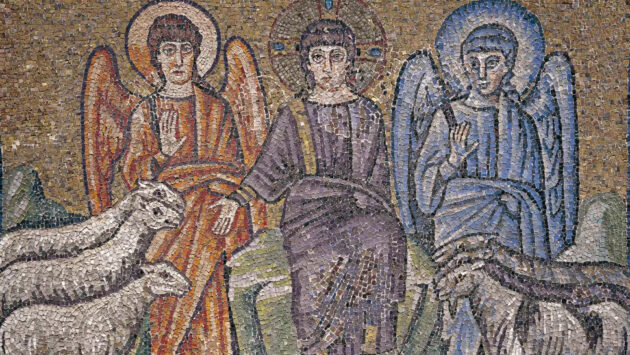
In some early middle-eastern mythologies, Satan, Shaitan, is less the Devil we know, than God’s snitch. This idea lingers in texts like Job, where Satan presents himself to God alongside the angels. But the Book of Isaiah makes direct reference to God casting Lucifer, the angel of the morning star, from heaven.
The early mediaeval church elaborated the Biblical text further, making Lucifer the archetypal rebel, cast out of heaven for the ultimate sin of pride.
The Beast
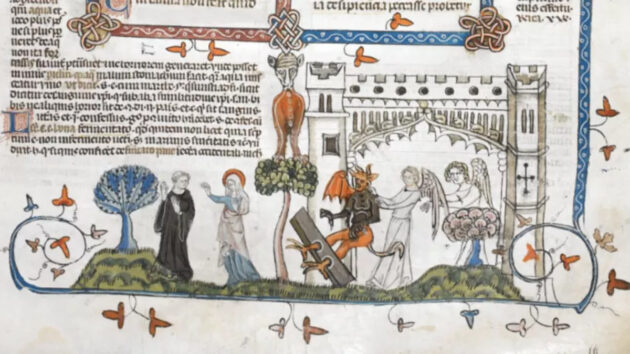
We are used to associating the Devil with the Beast of Revelations. But the Devil as Beast is a late mediaeval invention.
Perhaps evolving from the serpent image, mediaeval depictions of the Devil are commonly dragon-like. But it was not just mythical creatures who became associated with the Devil: foxes, bears, lions. Many mediaeval portrayals also give Satan animalistic features, introducing the iconic cloven hoofs, tails and talons.
The Bat-Winged Devil
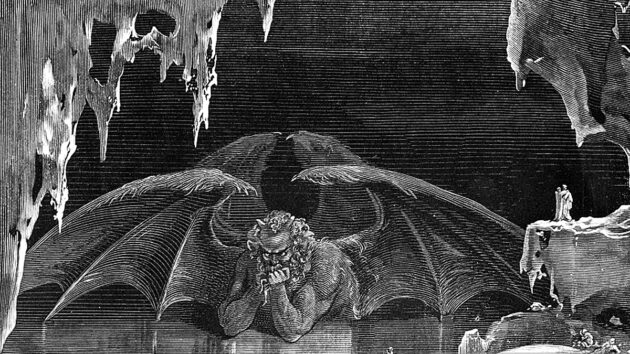
We owe the bat-winged devil to Dante’s 14th century classic, Inferno. In the seventh circle of Hell, the protagonist finally faces Satan himself.
Dante describes Satan as having “two mighty wings, such as befitting were so great a bird; sails of the sea I never saw so large. No feathers had they, but as of a bat.”
Scholars suspect that Satan’s wings may originate in Babylonian mythology, from association with the evil figure of Lilith. “Lilith” is derived from “lilitu”, Babylonian demons in the shape of winged females. These monsters would fly through the night, seducing men and attacking pregnant women and infants.
The Horny Devil
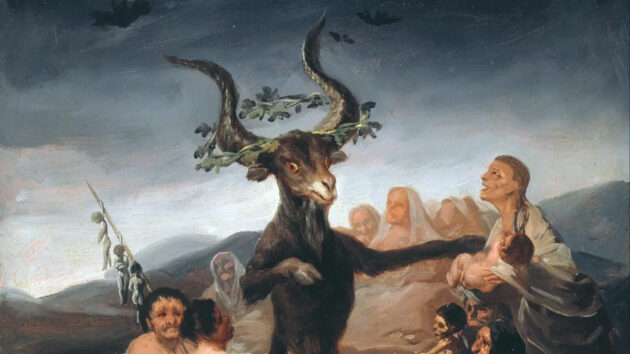
Satan with goat’s horns, a goat’s head, or even as a goat entirely, is another familiar icon of Satanism, dating back to mediaeval times.
In the 6th century mosaic shown above, the devil figure stands behind three goats, while an angel is accompanied by three sheep. This imagery is derived from the gospel of Matthew, where Jesus is described as separating “the people one from another as a shepherd separates the sheep from the goats”. The goats are those who will not enter heaven. Some scholars claim that this is the origin of the horned devil.
Others, though, claim that the horned gods of Paganism, from the Greek Pan to the Celtic Cernunnos, became associated by Christians with evil, and therefore the Devil.
Yet not all Christians rejected the goat as evil. Christian mystic poet William Blake, for instance, declared that “the lust of the goat is the bounty of god”.
The Chiseled Adonis
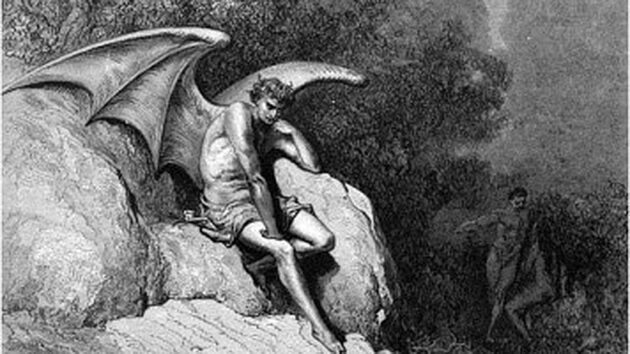
Like the bat wings, Satan as a buffed hunk is derived from a classic poem: Milton’s Paradise Lost:
“He above the rest In shape and gesture proudly eminent stood like a Towr; his form had yet not lost all her Original brightness, nor appear’d less then Arch Angel ruind”.
Paradise Lost also describes the Devil as an heroic military leader.
Gustave Dore’s magnificent illustrations to both Dante and Milton combine the features of both poetic descriptions. Satan is a brooding, romantic hero; all thunderous glares, muscled body and bat wings.
William Blake likewise depicted a nude Satan as a handsome, god-like figure.
The Devil Wears Red Tights
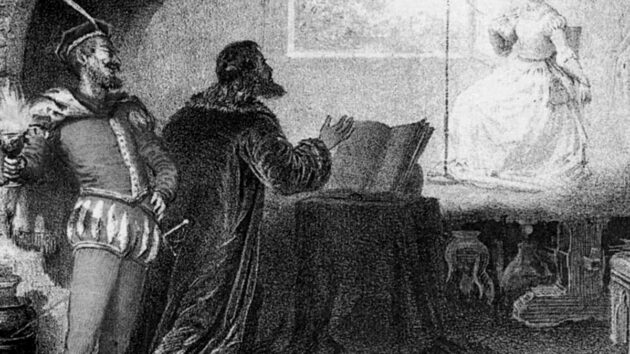
The now-comical depiction of the Devil wearing red tights and having a pointy beard is everywhere, from children’s Halloween costumes to advertisements and cartoons.
The Devil in Tights originated in 19th century theatre. In 1859, composer Charles Gounod adopted the tale of Faust into an opera. In productions of the opera, where basso Marcel Journet sang the role of the demonic Mephistopheles over a thousand times, the character dressed in a Renaissance-era costume, including red hose, now known as tights.
This image became near-ubiquitous in later 19th and early 20th century advertisements and cartoons.
The Sinister Suit
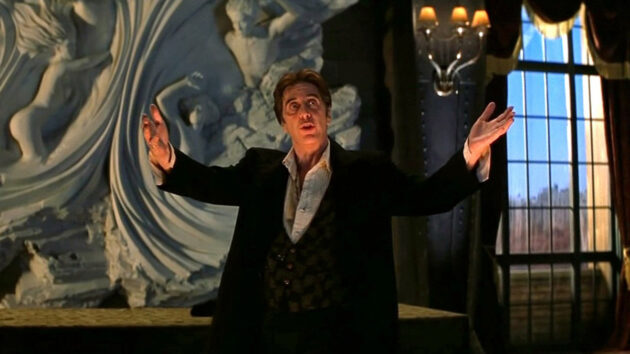
Modern distrust of the rich and of lawyers, in particular, has fuelled depictions in cinema and novels of the Devil as a Sinister Suit. From 1987’s Angel Heart to 1997’s The Devil’s Advocate, and more recently in the series Lucifer.
But even this image has its origins in the Middle Ages. A popular mediaeval court drama describes how “the devil and his hellish council selected a demon learned in the law and sent him to the court of heaven in order to sue for a legal title to the human race”.
In 1936, writer Stephen Vincent Benet wrote The Devil and Daniel Webster in which the character Mr. Scratch (Satan) fights for his right to a man’s soul in a court of law.
Even The Monkees got in the act, with The Devil and Peter Tork, in which gormless Peter inadvertently sells his soul for a magic harp and the rest of the band are forced to defend him in a court in Hades. This, of course, also refers to the popular legend that blues master Robert Johnson “went down to the crossroads” and sold his soul to the devil in exchange for mastery of the guitar.
Ah, rock and roll and the Devil’s Music… that’s another story altogether…
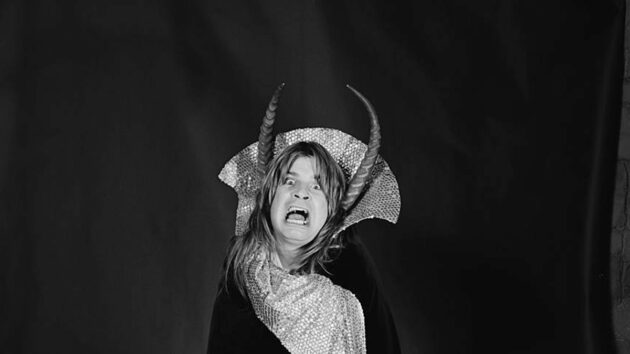
Please share this article so that others can discover The BFD

